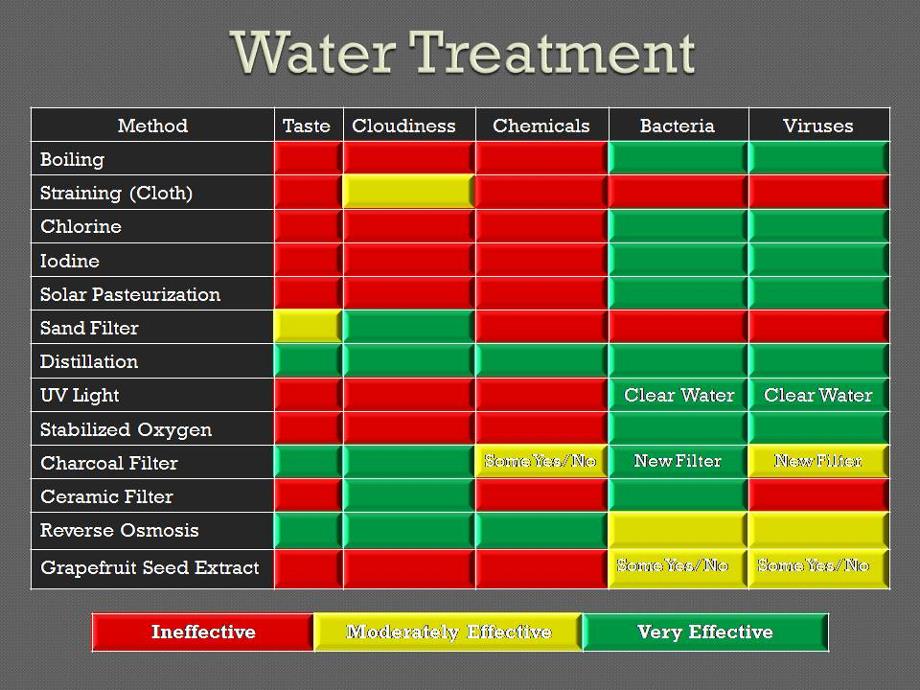
|
Tap water is recommended for your long term water storage. It is clean, inexpensive and easy to rotate frequently. If you store your water in clean, opaque containers in a cool and dark location, you probably do not need to treat your water at all. Under these conditions the water can actually get more pure with time. Since there is no guarantee that the water is actually bacteria-free and as a precaution against any lingering organisms in storage containers that may have been inadvertently missed during the cleaning process, it is recommended that you purify it. Some water treatment methods for long term water storage: ¨ Boiling Water Boiling water is the best method for making water safe to drink. Boiling water as recommended will kill bacterial, parasitic, and viral causes of diarrhea. Adding a pinch of salt to each quart will improve the taste. Boil water vigorously for 1 minute and allow it to cool to room temperature (do not add ice). At altitudes greater than 6,562 feet (>2,000 m), boil water for 3 minutes or use chemical disinfection after water has been boiled for 1 minute. ¨ Tincture of Iodine If using tincture of iodine 2% solution, add 5 drops to a Liter or Quart of clear water. If the water is cloudy, add 10 drops per Liter or Quart. (Note: 20 drops=1 ml.) Allow the water to stand for 30 minutes before drinking when the water temperature is at least 25°C (77°F). Increase the standing time for colder water: (e.g., for each 10° less than 25°C (77°F), allow the water to stand for double the time before drinking it. Warning! Water that has been disinfected with iodine is NOT recommended for pregnant women, people with thyroid problems, those with known hypersensitivity to iodine, or continuous use for more than a few weeks at a time. ¨ Chlorine Bleach (liquid) One gallon can be treated by the addition of 1/8 teaspoon (about 5-8 drops) of liquid chlorine bleach containing 4 to 6 percent sodium hypochlorite. (Most bleaches contain 5.25 %) 1/8 of a cup of bleach will treat 55 gallons. The bleach should not contain, phosphates, softeners, fragrances or soap additives. ¨ Portable Water Filters Select a backpacking filter that filters to an "absolute” pore size of 0.1 to 1 micron. This will remove most diarrhea-causing bacteria. Viruses are smaller than 0.1 micron and will NOT be removed by filters. To kill viruses that may pass through these filters, add iodine or bleach to the filtered water before you drink it. ¨ Water Purification Tablets Different types of tablets are available for water purification purposes. Be sure to follow the manufacturer’s directions for treatment and allow sufficient time for the chemical to work before using. Check the label for expiration date, since the tablets can become ineffective with time. Most tablets have a storage life of approximately 2–5 years unopened. Less if stored in the heat of your garage. |
|
Water Treatment |


